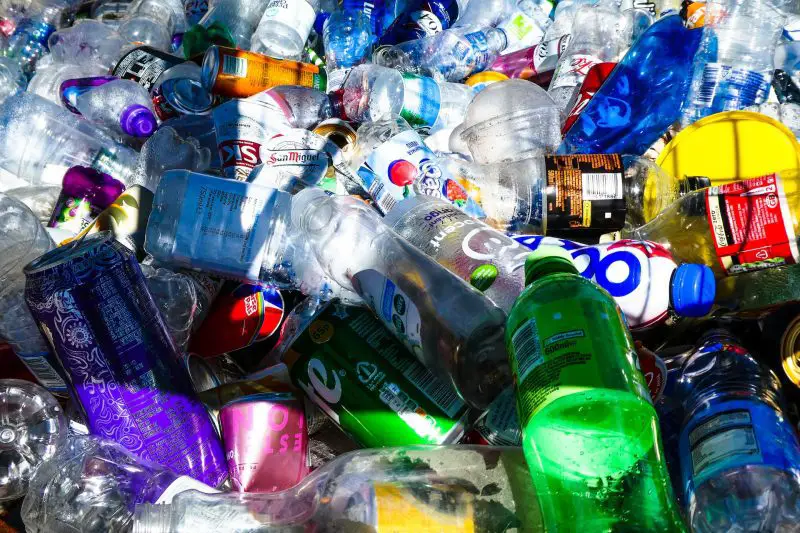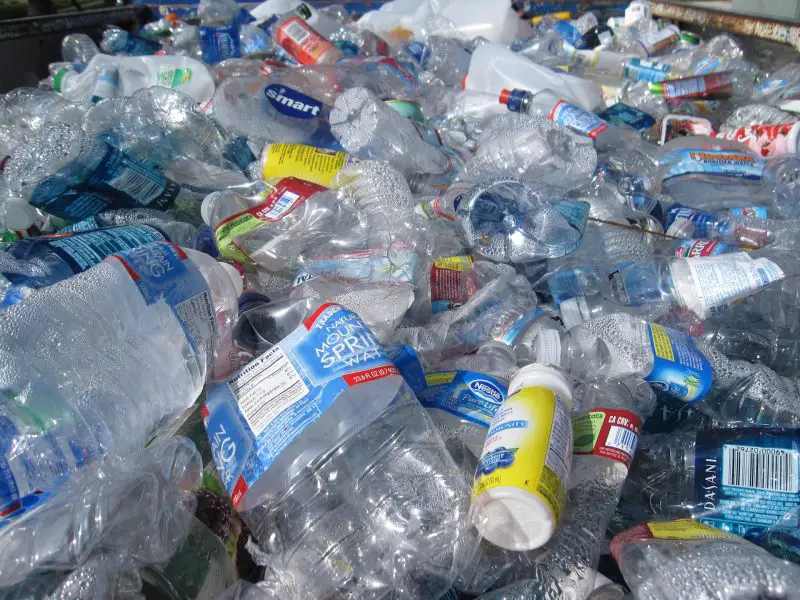Do you know that bottled water is the most popular beverage in the United States, with 24.8% market share?
Most would guess it should be carbonated soft drinks or coffee, but carbonated drinks like Coca-Cola and Red Bull only come in a close second at 21.9% market share and coffee a far third at 12.6% market share.

No wonder, then, that there are so many water bottle sizes around!
Common Water Bottle Sizes
Water bottle sizes vary according to the purpose you’d be needing them for and for your convenience. You wouldn’t bring an 8-ounce water bottle on a long hiking trip. Neither would you want to carry a large 64-ounce water bottle to school or work.
The standard and most common water bottle size is 8 inches (500 millimeters) tall and 2.5 inches (64 millimeters) in diameter, containing 16.9 fluid ounces (500 milliliters) of water.
However, it can come in smaller sizes down to 8 fluid ounces (237 milliliters) and all the way up to 33.8 fluid ounces (1 liter).
Water bottle sizes are usually expressed in terms of volume – whether in fluid ounces (fl. oz.) or milliliters (ml).
These are the usual water bottle dimensions in diameter and length for each water bottle size in terms of volume:
Water Bottle Volume Water Bottle Dimensions
8 fl. oz. (237 ml.) 2.25 x 5 in. (57 x 127 mm.)
12 fl. oz. (355 ml.) 2.25 x 7 in. (57 x 179 mm.)
16.9 fl. oz. (500 ml.) 2.25 x 8 in. (57 x 203 mm.)
20 fl. oz. (591 ml.) 2.25 x 8.9 in. (57 x 226 mm.)
24 fl. oz. (710 ml.) 2.25 x 10.8 in. (57 x 274 mm.)
33.8 fl. oz. (1,000 ml.) 2.25 x 11.2 in. (57 x 285 mm.)
Smaller sizes are usually good for single-use drinking. If you want to stay hydrated all day without needing to refill your water bottle often, it’s best to use the recommended 16.9 fl. oz. to 24 fl. oz. sizes.
If you expect to be needing more water due to heavy physical exertion or long travel time, you can go up to 33.8 fl. oz. (1,000 ml.) or even the less common 64 fl. oz. (1,893 ml.) sizes.
How Tall is A Water Bottle?
The standard 16.9 fl. oz. water bottle is 8 inches tall. All common water bottle sizes come in 2.25-inch diameters. They differ only in length, from 5 inches to 11.2 inches.
When going on a hike or traveling around with a backpack, it’s a good idea to check that your backpack size can hold your favorite water bottle.
How Many Ounces/Milliliters Does a Water Bottle Hold?
The standard water bottle size holds 16.9 fl. oz. (500 ml.) of water. The smallest bottle holds 8 fl. oz. (237 ml.). The next smaller one holds 12 fl. oz. (355 ml.)
The next larger bottles hold 20 fl. oz. (591 ml.) and 24 fl. oz. (710 ml.) respectively, while the largest bottle holds 33.8 fl. oz. (1000 ml. or 1 liter) of water.
Gallon jugs of water are also used, but these are more commonly used for in-home use or in some cases by people that essentially live in the gym.

Eco-Friendly Water Bottle Options
Worldwide, 481.6 billion plastic bottles are used every year, or 40 billion every month. A single-use plastic water bottle takes around 450 years to decompose, releasing toxins into the groundwater as it does.
Plastic water bottles are made of polyethylene terephthalate (PET) plastic. In the United States, only 29% of PET water bottles are recycled. The rest are trashed, at a rate of more than 60 million plastic water bottles every day.
They end up in landfills and incinerators or they clog waterways. Those not contained by fallen trees or other debris float out into the Atlantic and Pacific Oceans and find their way to the shores of island communities and coastal countries that depend on marine life for a living. These plastics choke up marine life and damage our ecosystems.
It’s estimated that around 8 million to 9 million metric tons of plastic end up in our oceans every year. This is the equivalent of a garbage truck dumping plastic into the ocean every minute. At this rate, the world’s oceans will contain more plastic than fish by 2050.
To stop contributing to water pollution and environmental harm, refuse plastic water bottles and replace them with other alternatives, such as reusable water bottles. Ask your school or office for a water filtration system or hydration station that encourages people to bring reusable water bottles instead.
Use eco-friendly alternatives to plastic water bottles like glass, ceramic, stainless steel, plant-based plastics, boxed water (or paper bottles), and reusable bottles.
Glass and ceramic bottles, although prone to breakage, now come in designs that protect the actual bottle. Often, the designs are also works of art in themselves. They are less expensive, too.
Plant-based plastic bottles are not only biodegradable but edible. Even if you don’t eat them, feel good knowing they are safe and don’t impart the same chemicals as plastic bottles might.
Paper bottles are made of paper– like paper coconut water bottles– and are 100% recyclable, although they have a limited lifespan. Paper Water Bottle, the company, uses a special blend of bamboo and sugarcane to create a rigid outer shell for its paper bottles, even as it uses innovative technology to maximize the bottles’ compostability for a more sustainable solution to the plastic problem.
Stainless steel bottles are lined, so there is no metal taste in the water they hold. They also keep water cold or hot longer than glass bottles do, since metal is a natural temperature conductor. They are sturdier than glass or ceramic bottles, too.
Americans alone buy around 50 billion plastic water bottles every year, which translates to an average of 13 plastic bottles for each American every month. If each one used a reusable water bottle, each one can save an average of 156 plastic bottles every year.
Although plastic water bottles seem like they have always been around us for the longest time, they only started appearing commercially in 1947. Before this, water bottles were made of glass or ceramic. Long before these, there was earthenware. Today, there are more alternatives to plastic water bottles that are kinder to the environment. In whatever sizes they come, choose these alternatives over plastic.
- What Size is Regular Printer Paper? Quick Guide for Paper Dimensions - June 18, 2023
- What Size is My Monitor: A Comprehensive Guide - June 18, 2023
- How Big is Italy Compared to the US? A Concise Comparison - June 16, 2023

